Mindmap: Effortlessly map out your learning
- English Version
- 中文
- 日本語
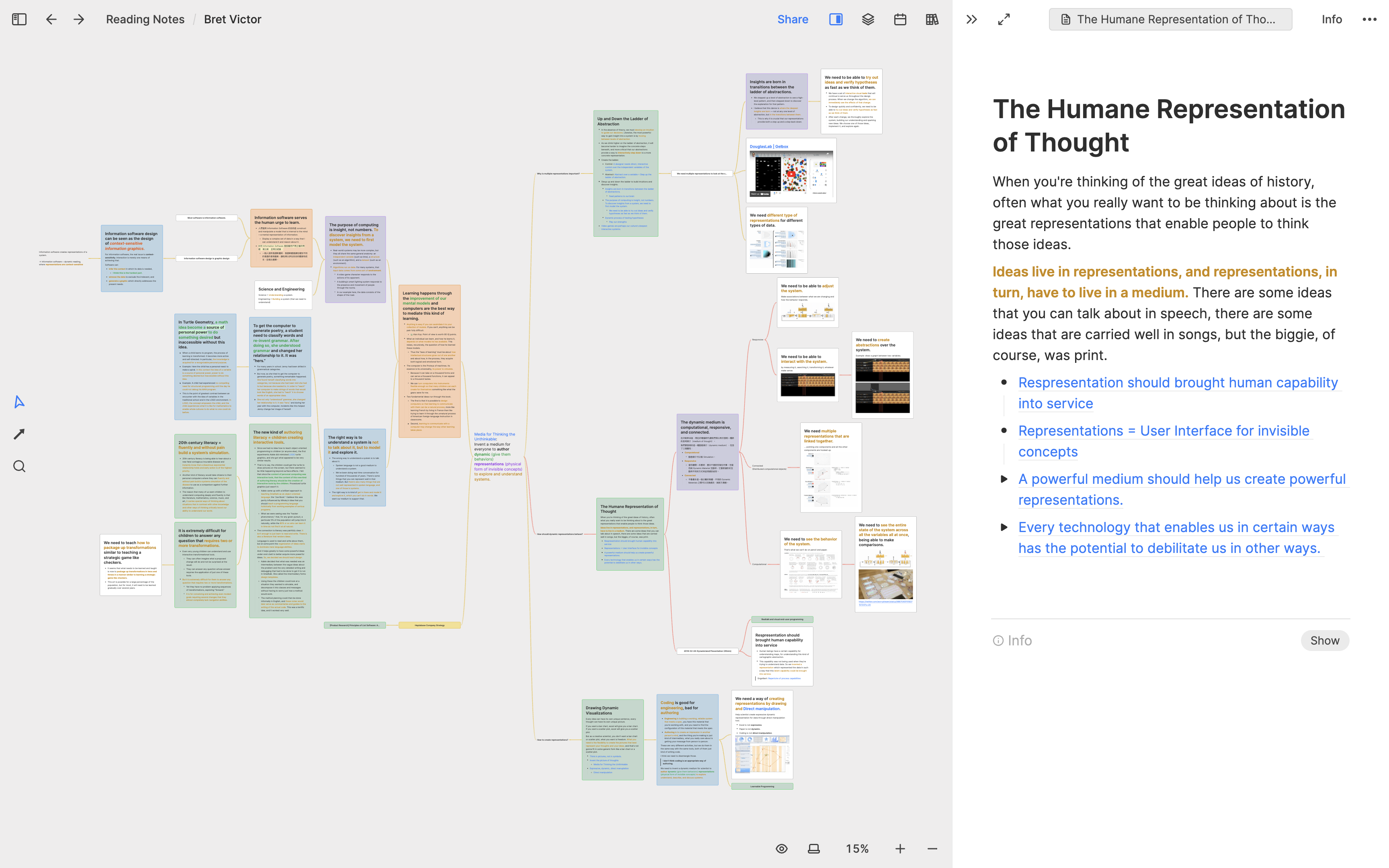
If you have a clear hierarchical structure in the topic you are learning or researching, consider using a mindmap to take notes. While mindmaps have less flexibility in layout compared to placing cards on a whiteboard, they have a unique advantage: you can quickly and easily adjust the layout of the mindmap by dragging nodes.
How to use mindmaps
At Heptabase, there are two ways to use mindmaps. The first way is to right-click on an empty space on the whiteboard and choose the "Mindmap" option to create it.
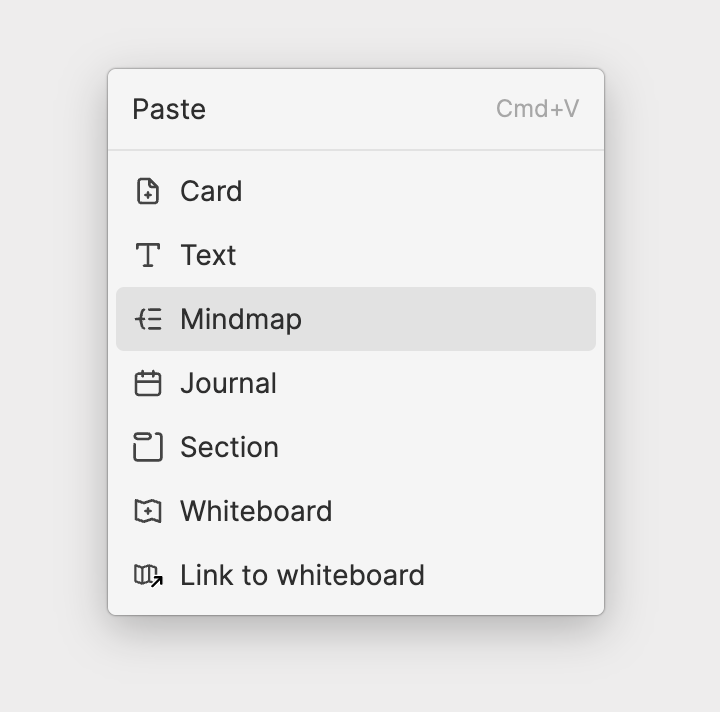
By default, each node in a mindmap is a single-line text node. You can create sibling nodes using Enter, create child nodes using Tab, and use the arrow keys to navigate between nodes. This type of text-based mindmap is useful for quickly brainstorming a topic or organizing notes during classes or while watching videos.
Although text-based mind maps are useful, Heptabase has a unique advantage compared to traditional mind maps: cards can also be mindmap nodes!
When you want to turn a text node into a card and add it to your Card Library, you can right-click on it and select "Turn into new card".

If you want to add an existing card to a mind map, simply drag it onto the desired node, and the card will be attached, becoming a new node in the mindmap.
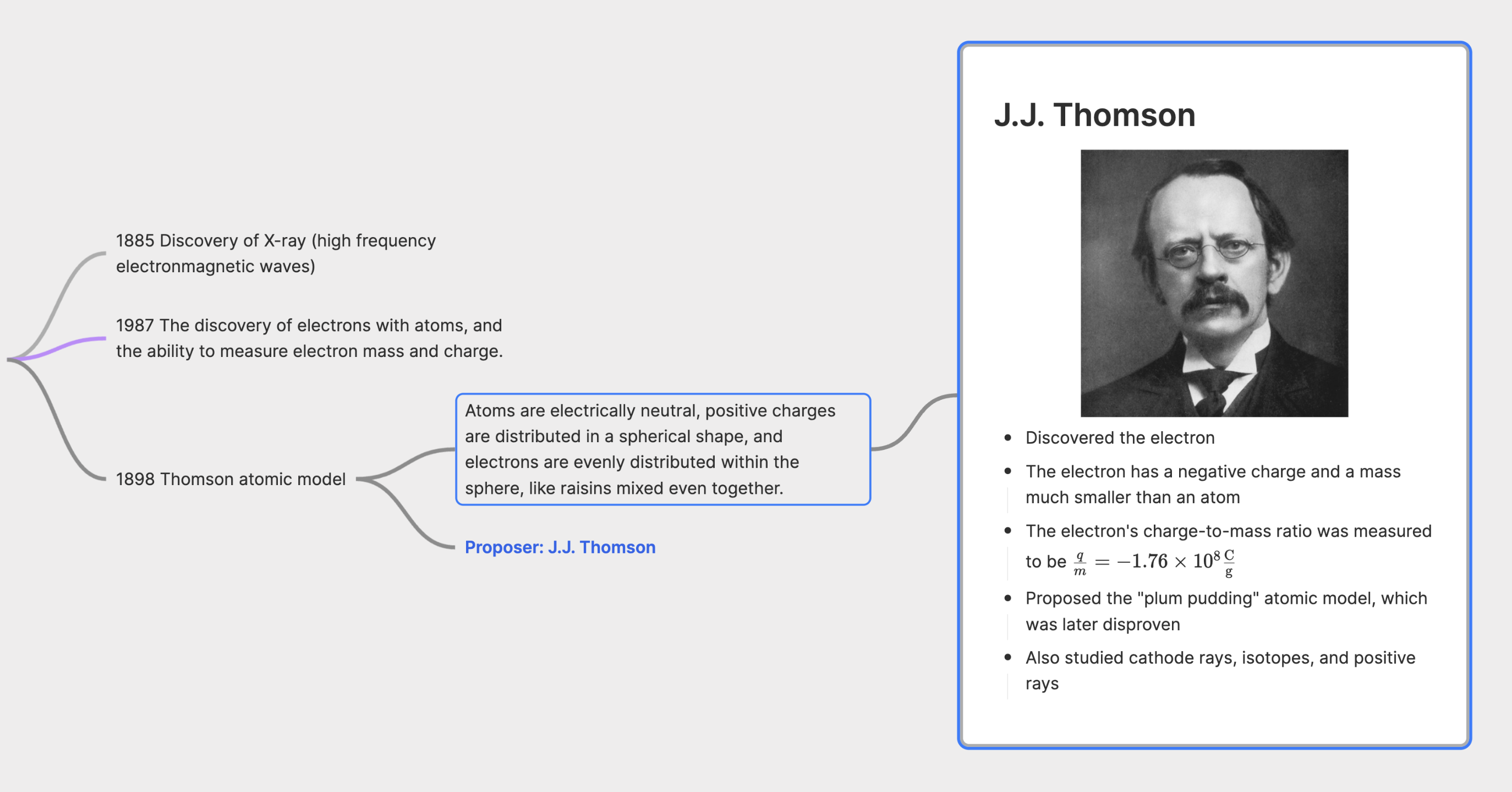
If you want to create a new mindmap centered around a specific card, just right-click on the card and open the switch for mindmap mode, and you can start adding sub-nodes to it.
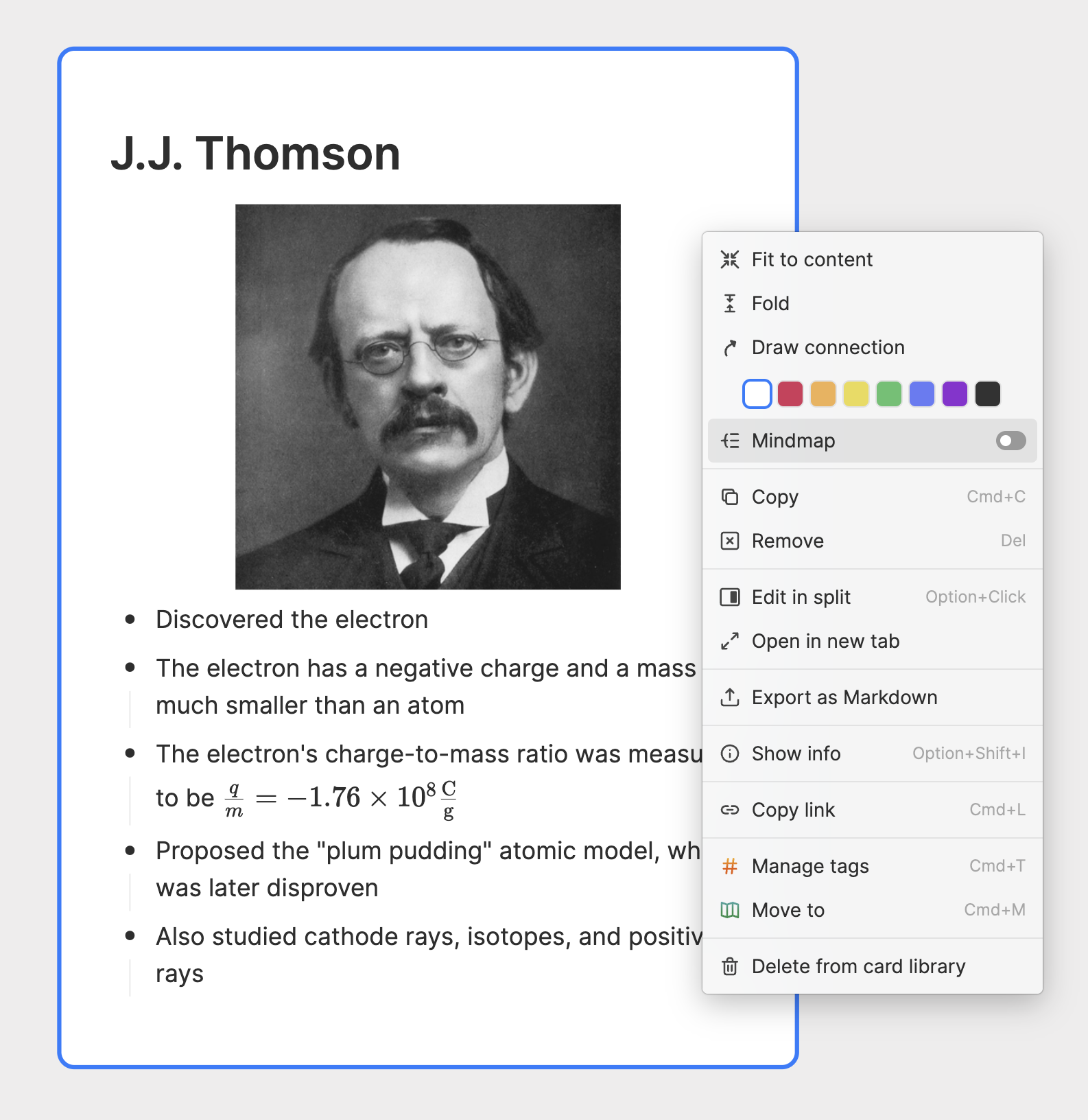
Compared to text-based mindmaps, card-based mindmaps can carry more knowledge and help you better understand the structure of the topic you are learning. Mindmaps are no longer just used for brainstorming but can actually become a part of your knowledge management!
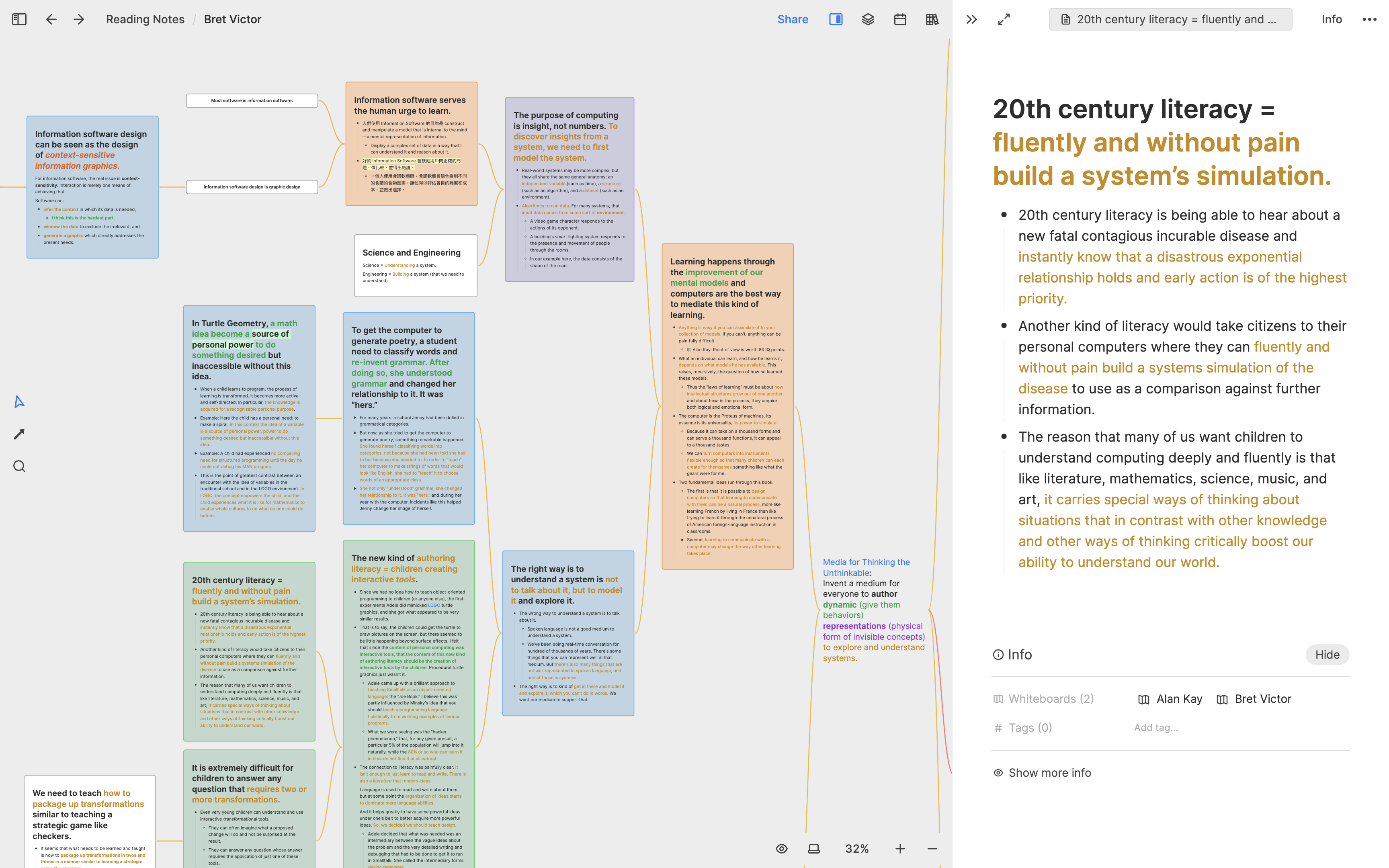

當你在學習或研究的主題有明確的階層架構時,你可能會想使用心智圖(Mindmap)佈局跟這個主題有關的筆記。相較於單純地把卡片放在白板上,心智圖雖然在佈局上比較沒有彈性,但是它有一個獨一無二的優勢:你可以很快速且輕鬆地透過拖拉節點來調整心智圖的佈局。
如何使用心智圖
在 Heptabase,使用心智圖有二種方法。第一種方法是直接在白板空白處右鍵,選擇心智圖(Mindmap)的選項來新增。

在預設情況下,心智圖中的每個節點都是單行的文字節點,你可以透過 Enter 創建同級節點、Tab 來創建子節點、上下左右鍵在節點之間移動。這種由文字節點構成的心智圖非常適合拿來快速地發想一個主題,或是在上課或看影片時快速地整理筆記。
文字心智圖固然好用,但 Heptabase 與傳統心智圖相比有個獨一無二的地方,那就是卡片也可以是心智圖節點!
當你今天想將某個文字節點變成卡片添加到卡片庫時,你可以對它點擊右鍵並選取 Turn into new card。

如果你想要將白板上的某張卡片添加到心智圖,你只要把它拖到你想要的節點上,卡片就會被吸附上去,成為心智圖的新節點。

如果你想要以某張卡片為中心點去發展一個全新的心智圖,那也沒問題!在卡片上方點擊右鍵,打開心智圖模式的開關,你就可以開始為它添加子節點了。

相較於文字心智圖,卡片心智圖能乘載更多的知識、幫助你更好地理解你在研究的知識架構。心智圖不再只是被用來做發想,而是可以實實在在地成為知識管理的一部分!


トピックの学習や調査には階層的な構造が明確にある場合、マインドマップを使ってメモを取ることがおすすめです。マインドマップはホワイトボードにカードを配置するよりもレイアウトの柔軟性は少ないですが、独自の利点があります。ノードをドラッグすることで、マインドマップのレイアウトを素早く簡単に調整できます。
マインドマップの使い方
Heptabaseでは、マインドマップを使うための2つの方法があります。最初の方法は、ホワイトボードの空白のスペースで右クリックし、「マインドマップ」オプションを選択して作成することです。

デフォルトでは、マインドマップの各ノードは単一行テキストノードとなっています。Enter キーで同じ階層のノードを作成し、Tab キーで子ノードを作成し、矢印キーを使ってノード間を移動することができます。このようなテキストベースのマインドマップは、トピックのアイデアを素早くブレインストーミングしたり、授業中や動画視聴中にメモを整理するのに役立ちます。
テキストベースのマインドマップは有用ですが、Heptabaseは従来のマインドマップに比べて独自の利点があります。それは、カードもマインドマップのノードとして使用できるということです!
テキストノードをカードに変換し、カードライブラリに追加したい場合、それを右クリックして「新しいカードに変換」を選択することができます。

既存のカードをマインドマップに追加する場合は、単にそれを望むノードにドラッグ&ドロップするだけで、カードが添付され、マインドマップの新しいノードになります。

特定のカードを中心にした新しいマインドマップを作成したい場合は、カードを右クリックして「Mindmapモード」を開き、サブノードを追加できます。

テキストベースのマインドマップと比較して、カードベースのマインドマップはより多くの知識を持ち、学習しているトピックの構造をより良く理解するのに役立ちます。マインドマップはもはやブレインストーミングに使われるだけでなく、実際には知識管理の一環になる可能性があります!

このセクションの翻訳は ChatGPT によって生成されました。もし、より正確または繊細な翻訳が可能だとお考えの場合、pj@heptabase.com までお気軽にご連絡ください。皆様のフィードバックを大変感謝しております!